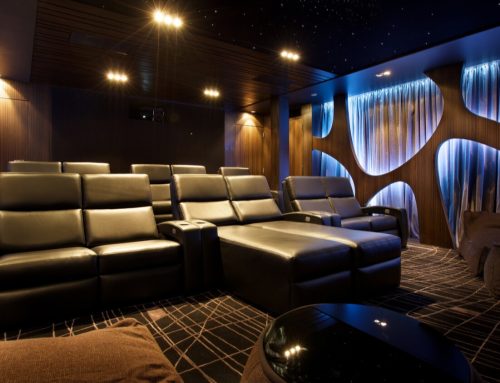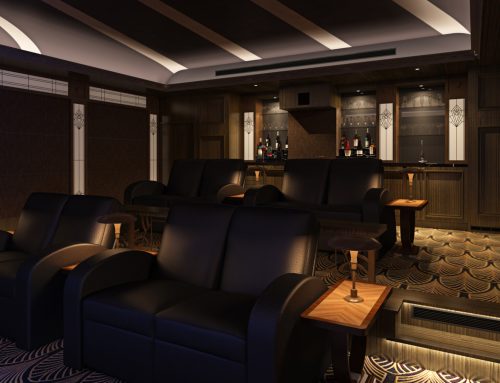A truly immersive home cinema experience doesn’t start with a projector or a giant screen, it starts with sound in the room and the room acoustics that shape it. Without excellent acoustics, even the most advanced gear will under-deliver. Acoustic treatments – including isolation, absorption, and diffusion – ensure that what you hear is accurate, detailed, and free from outside noise, so your surround sound system performs as intended. Hidden behind wall panels, doors or ceilings, they let your cinema look beautiful while performing at reference level.
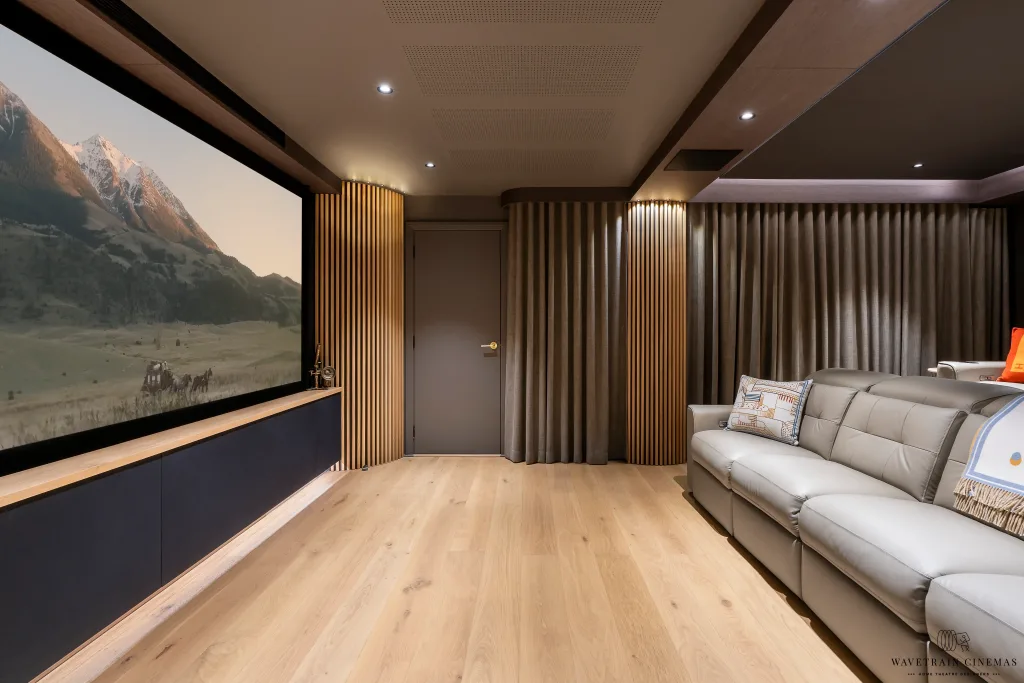
Here’s how acoustics underpin every great cinema and what you need to plan for to get them right.
Why Acoustics Matter So Much In Home Cinema Design
Good room acoustics shape the quality of the sound before any home theatre equipment is chosen and determine how clearly you hear dialogue, bass and spatial cues.
Accuracy in Sound Reproduction
Every detail of a film’s soundtrack – from quiet dialogue to sweeping orchestral scores to deep bass explosions – relies on sound travelling in a controlled environment. Poor acoustic design causes echoes and reverberation, smears sounds, obscures dialogue and reduces clarity. Sound distortions aren’t just annoying, they break immersion.
Immersion & Envelopment
Immersive sound (e.g. surround, Atmos, Dolby) depends not just on speaker count but on having a room that supports the subtle cues of spatial audio. Reflections, early and late, shape how sound feels, whether you believe the effect. Diffused sound field, well-tuned low end, and limited noise intrusion enhance your home theatre experience by allowing your brain to “buy in” to the illusion.
Reference Level Performance
If you want that cinema-level fidelity – meaning faithful reproduction without coloration, distortion, or unwanted room resonances – acoustics are non-negotiable. Even if you have top-spec gear, things like sound leakage, standing waves, and improper absorption will limit performance.
Invisible but Essential
Acoustic treatments don’t have to be obvious. When done right, you don’t notice them visually, but you definitely notice what they prevent (echoes, muddiness, noise). A key part of good home theatre design is hiding performance behind aesthetics.
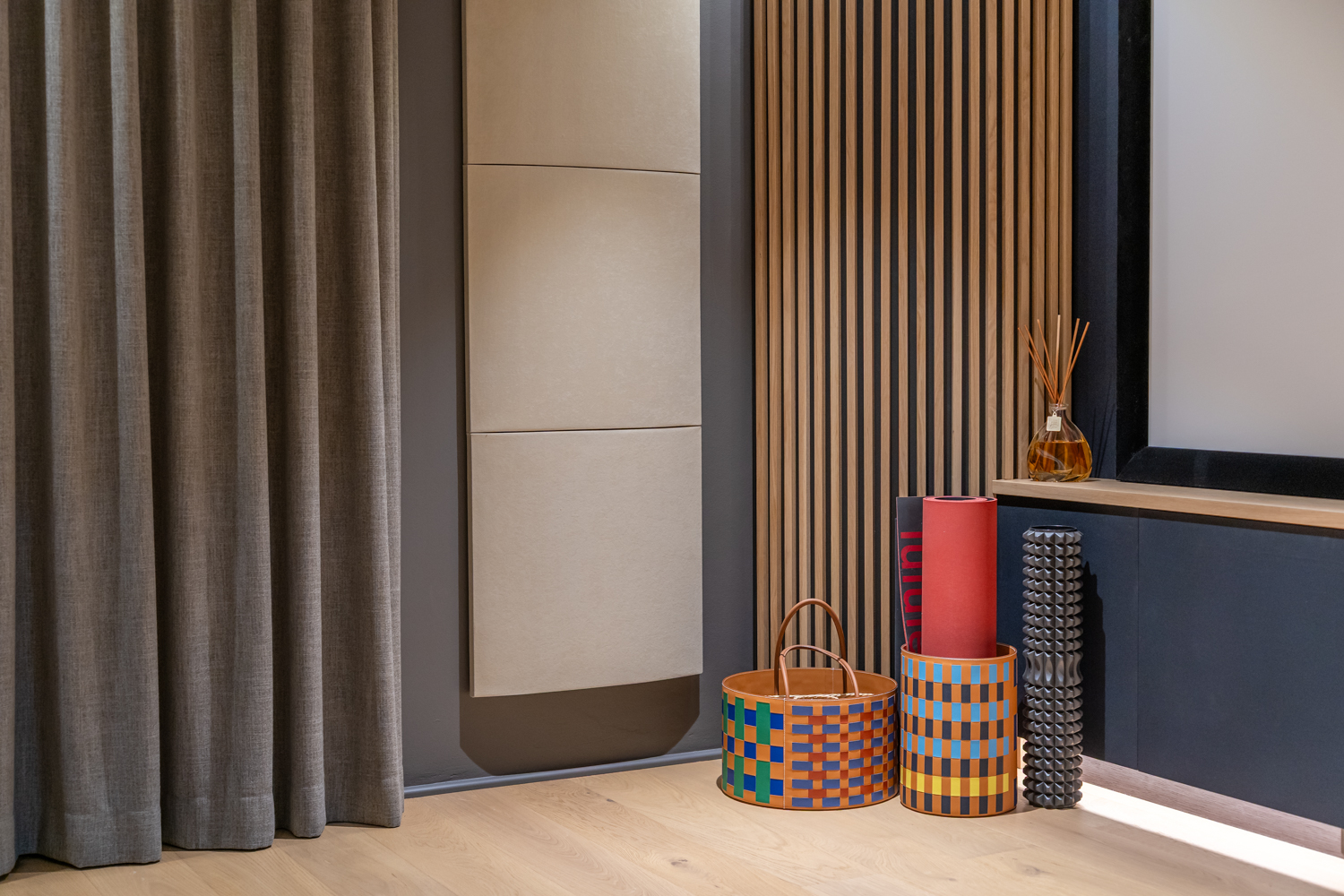
This image from Serenity Cinema showcases how acoustic design can blend seamlessly with aesthetics. The corner bass traps are integrated into the overall look, while the Andrea Artnovion panels add purpose, warmth, and texture. Acoustically transparent curtains conceal treatments while allowing sound to pass through, ensuring an undisturbed, immersive cinematic experience
Essential Acoustic Principles for Home Theatres
Here are the main principles that underlie acoustic treatments, many drawn from earlier Wavetrain content :
Room modes & resonances
These are natural frequencies at which the room vibrates or “rings” because of its dimensions. Bad room proportions or parallel surfaces exacerbate these. They cause certain notes (usually in the bass region) to boom or decay slowly.
Reflections, echo, reverberation
Hard flat surfaces cause sound waves to bounce. Early reflections (those bouncing directly off nearby walls/ceiling/floor) can interfere with direct sound, leading to blurring of detail. Late reflections cause muddiness and reverberation.
Absorption vs Diffusion
Absorption removes sound energy (especially undesirable reflections) by converting some of it to heat, usually via porous or fibrous materials. Diffusion breaks up reflections, scattering sound so that reverberant energy is more evenly distributed rather than creating hotspots or echoes. The right balance keeps the acoustic signature lively without sound bouncing around the room.
Sound isolation / leakage
Keeping outside noise out, and preventing sound from escaping (if that’s part of the brief). Doors, windows, walls, HVAC penetrations are common weak points. Without good isolation, your loud soundtrack can annoy neighbours or be compromised by external noise. Soundproof detailing raises dynamic range for a better movie experience.
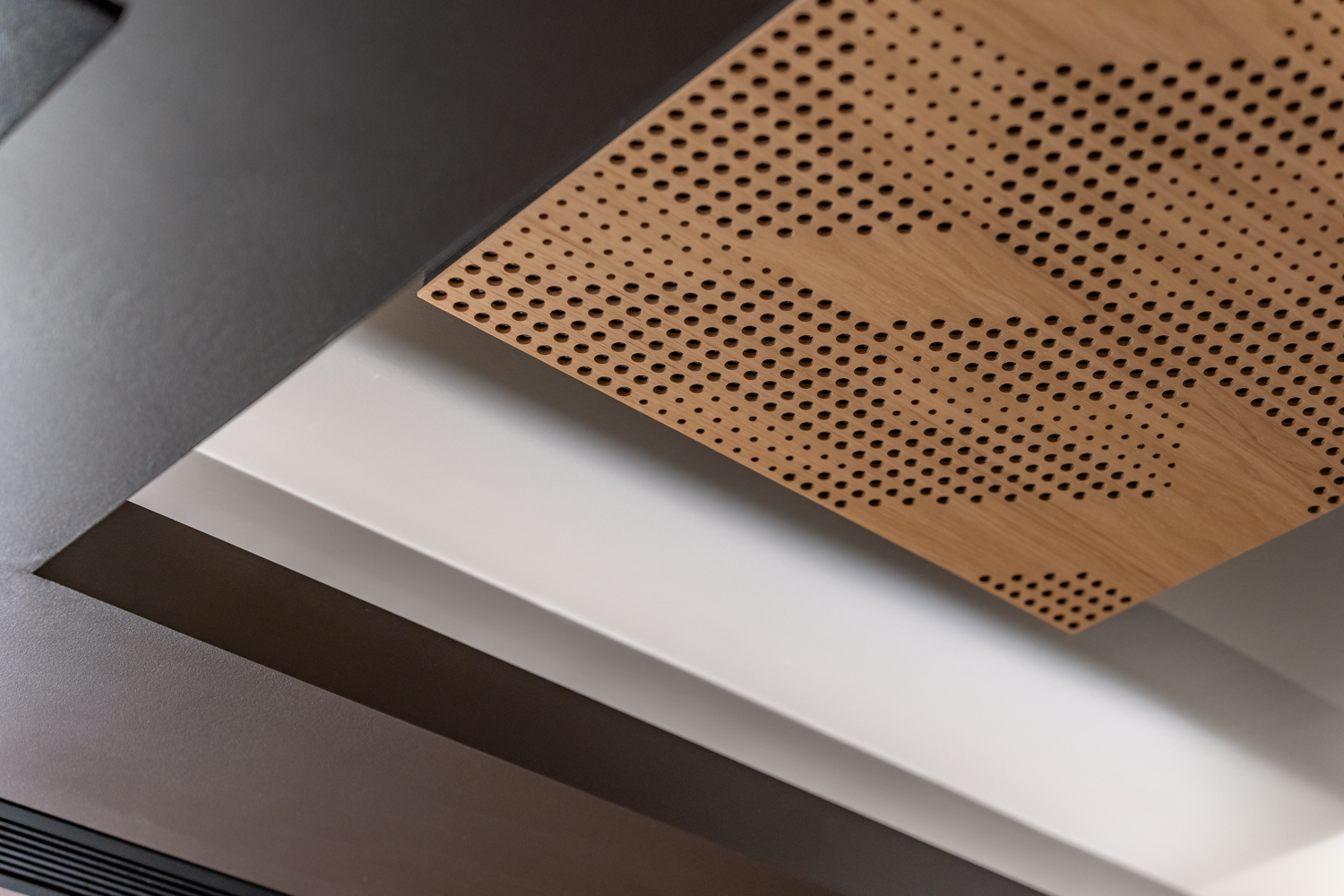
Acoustic Treatment Types & When to Use Them
Here are the core components of acoustic treatment, and how Wavetrain approaches them based on project scale, room shape, and performance goals:
| Treatment | What It Does | Key Use / Deployment |
|---|---|---|
| Absorbers | Reduce reflections, tame reverberation, remove high- and mid-frequency flutter. Also help reduce first reflections (walls, ceiling near seating). | Use on walls behind & beside seating, ceiling panels, carpets/rugs, upholstered furniture. In many projects, ~20%+ of wall surfaces are treated with absorbent materials to improve sound quality. |
| Bass traps / Sub-Traps | Control low frequencies, especially in corners, where bass tends to build up. Addresses room modes. | Place in corners, behind screen, or build into walls. Wavetrain’s preferred Sub Trap range is engineered specifically for deep bass control. |
| Diffusers | Scatter reflections so sound is more natural and spacious. Helps maintain clarity while giving envelopment. | Rear walls, side walls, ceiling behind seating. Choose diffusers tuned for mid-high frequencies. MSR Acoustics diffusers like the Sonata DR4, DC4 are examples regularly utilised by Wavetrain. |
| Hybrid panels | Combine absorption + diffusion to get benefits of both, often with a decorative finish. | Where you want performance and aesthetics. E.g. the Avalon Flow panels combine these properties. |
| Isolation / Sound Transmission Control | Stops outside noise; keeps internal sound contained; prevents sound leak. Also helps keep room quiet (low noise floor) so quieter passages are audible. | Doors, wall / ceiling insulation, window seals, floors. Wavetrain’s cinemaworks custom sound isolation door systems are designed for high RW/STC ratings (single door, airlock, etc.). |
Planning for Best Home Cinema Acoustic Outcomes: What You Must Do Early
To get acoustics right, you have to think ahead. It’s much more difficult and expensive to add or change treatments after walls and finishes are done. Here are critical planning-stage steps:
Specify Isolation in the Shell
Wall, ceiling, floor construction, door quality, window sealing, these should be designed for low sound transmission from the start. Include isolation in doors and HVAC penetrations so your sound system maintains impact without leakage.
Decide Treatment Zones & Reflection Points
Early reflection points (side walls, ceiling near front speakers), rear walls, corners (for bass), and behind seating all need treatment. Map these out while designing the layout of your space.
Plan for Balancing Absorption & Diffusion
A room that is too “dead” (too much absorption) loses life. Too much reflective surface gives glare, echoes. Usually you want a mix: absorption on first reflections, diffusion elsewhere, bass control in corners.
Include Finishes, Furniture, and Materials in the Acoustic Strategy
Carpets, wall panel materials, furniture upholstery all have acoustic impact. Hard surfaces (glass, tiled floors) reflect; soft surfaces (carpets, fabric panels) absorb.
Account for Room Shape, Proportions and Volume
Room dimensions drive room modes and reflections. If proportions are poor, even perfect treatment can’t fully compensate. Combine dimensional planning with treatment design. (See our earlier posts on room size/shape.)
Budget & Integration of Acoustic Treatments with Interior
Good treatments need not look industrial. They can be hidden behind fabric, timber, or designed as aesthetic features. Plan cost, material choices, and look as part of the overall design so treatments aren’t an afterthought.
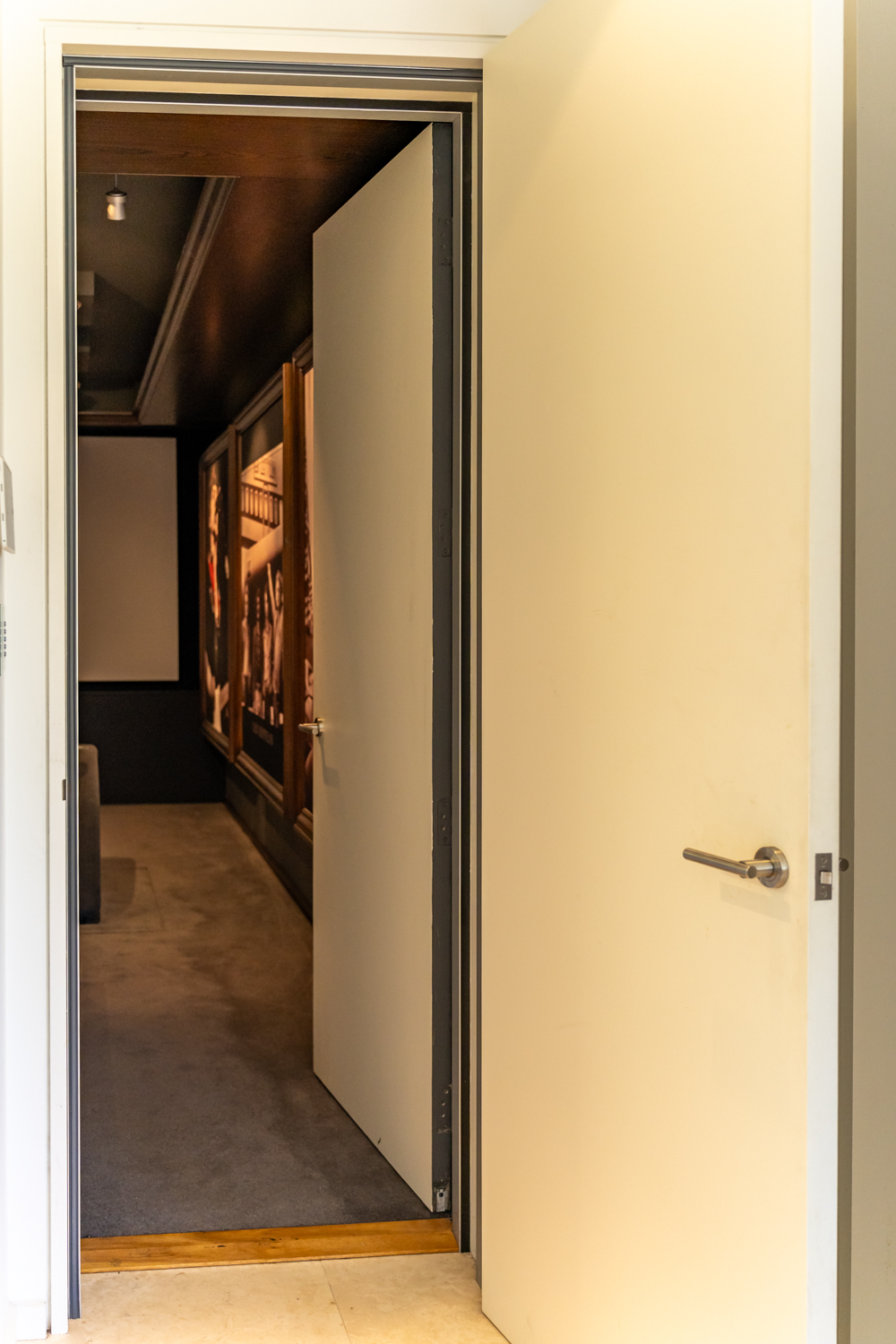
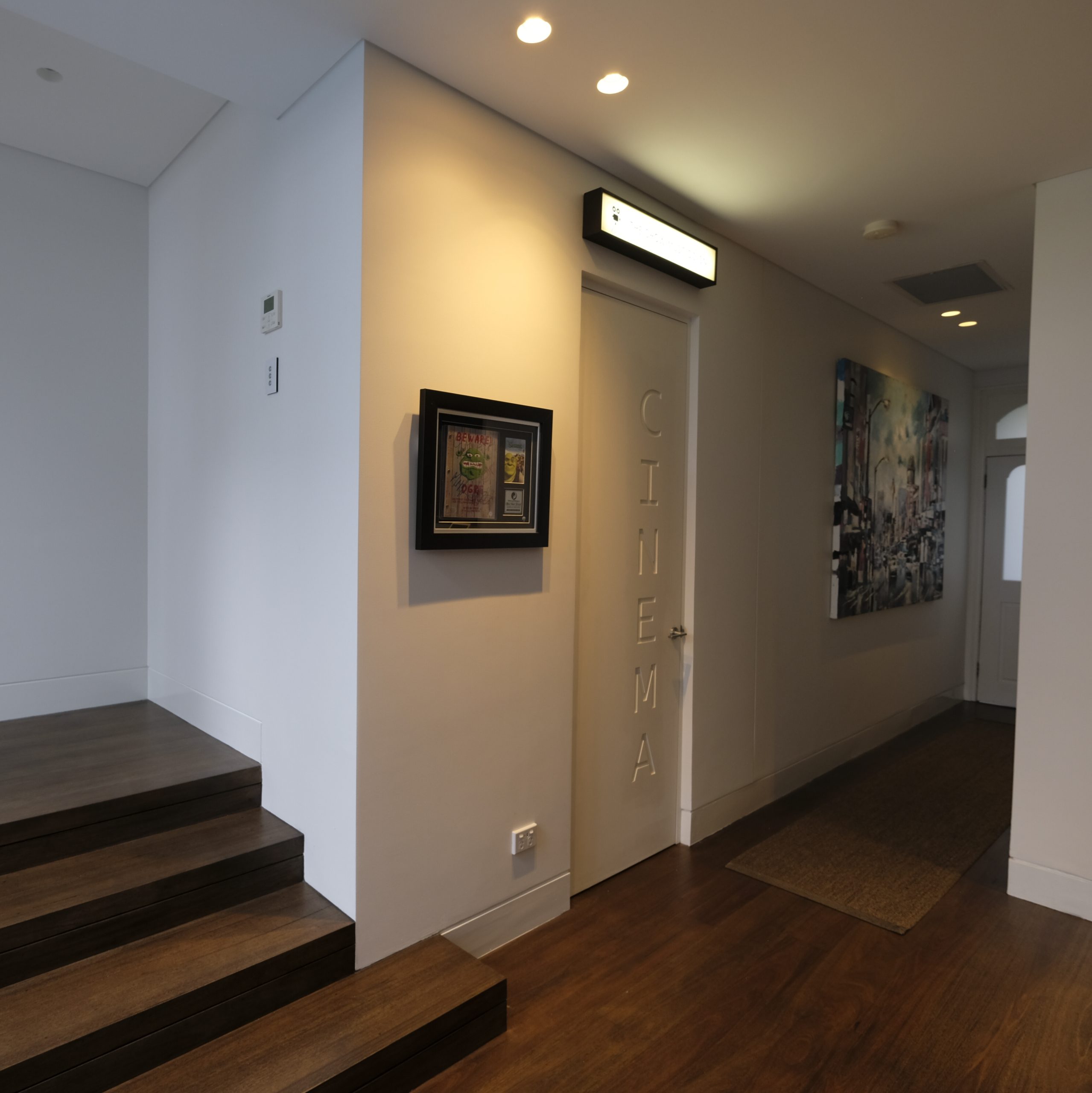
Common Acoustic Mistakes & How to Avoid Them
| Mistake | What Happens | How to Avoid It |
|---|---|---|
| Over-treating (too much absorption) | Room sounds “dead”, loss of brilliance, soundstage becomes constrained. | Maintain some reflective surfaces or use diffusion; leave rear wall slightly reflective or diffuse. Balance absorption vs diffusion. |
| Ignoring low frequencies / bass control | Bass booms, uneven bass across seats, long decay. | Use bass traps, tune for room modes, test with subwoofer(s), adjust placement. |
| Weak isolation in doors/windows/HVAC | Outside noise leaks in; sound leaks out; low sound pressure levels required for masking raise overall noise. | Use high RW rated doors, seals, double doors or air-locks, proper insulation in walls, ceiling. |
| Poor placement of speakers or seats without acoustic consideration | Early reflections degrade clarity; listener is off-axis; images and sound misalignment. | Use standard guidelines for speaker placement, angle, height. Ensure symmetry. Identify sweet spots. Treat reflection points. |
| Leaving acoustic treatment until last minute | Treatments may interfere with finishes, electrical, lighting; compromises are forced; aesthetic integration is harder. | Include acoustic consultant or acoustic design from early design stages. |
Bringing It All Together: What a Reference-Level Home Cinema Sounds Like
When properly designed, with good isolation, balanced absorption and diffusion, and accurate speaker & seating placement, your cinema will:
- Reproduce dialogue clearly, with minimal masking or muddiness
- Render both thunderous bass and delicate ambient detail without one overwhelming the other
- Have a soundstage that feels real – you perceive direction, depth, height (if using height channels)
- Maintain a low noise floor so even quiet scenes are immersive
- Feel immersive: you’re not aware of the room, only the story, the action, the environment
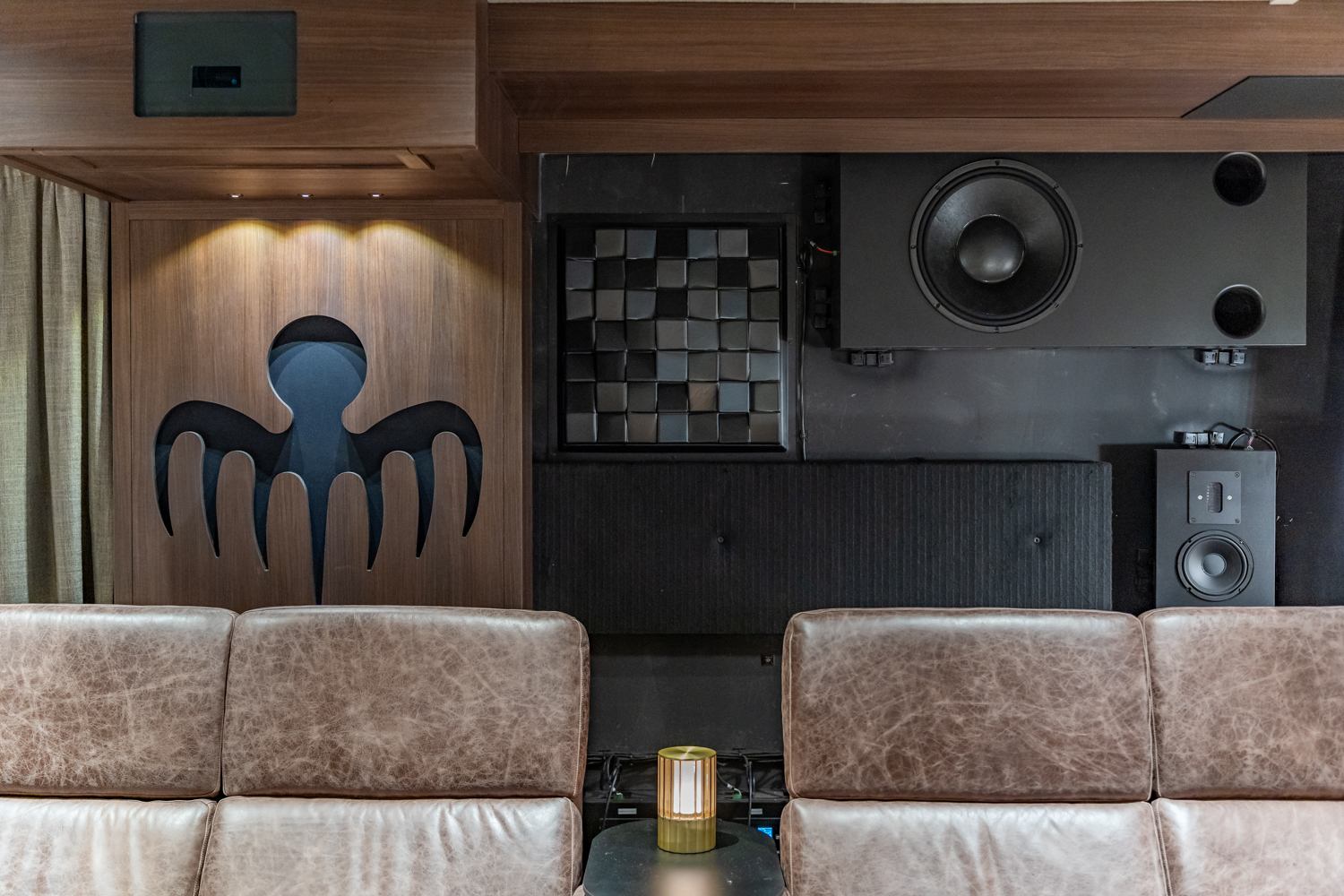
The Bottom Line
Acoustics are not optional. They are the foundation of every great home cinema. Without them, you’re buying equipment that can not perform to its potential. But with them, even modest-sized or less-than-perfectly shaped rooms can deliver cinematic audio that rivals commercial theatres.
If you’re planning a home cinema, or refining one, start by asking:
- How well isolated is the room? What are my weak links?
- Where will reflections come from, and how will I treat them?
- What is my room’s low-frequency behaviour, and how will I control it (bass traps, etc.)?
- How will absorption and diffusion balance in both performance and design?

